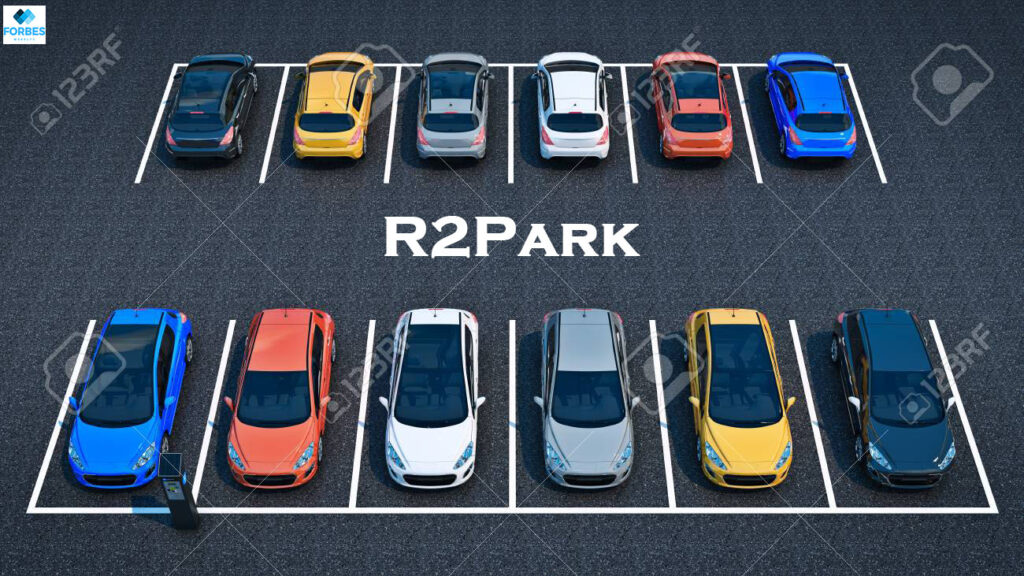The modern conditions are characterized by the constant growth of cities and new issues concerning geography or land use, road infrastructure and public transport availability, environmental impact and provision of green zones. Due to the ever-increasing population in cities, the search for effective solutions to these problems has assumed a rather important level. Such one of them, which also best captured public interest in recent years, is the R2Park. Urban development connected with the preservation of the environment is one of the concepts with great potential for changing the development of cities and their functioning. In this article, we will discuss the details of R2Park, major concepts behind it, advantages of this idea, and its prospects on the further development of the concept of smart cities.
What is R2Park?
R2Park is an ideology or concept of developing cities in the contemporary fashion, including parks and green spaces. The “R2” in R2Park is the abbreviation for “Revitalization and Resilience,” which are among the principles of the concept. R2Park incorporates representative components of cities including transportation, buildings, and environmental protection provisions that confer enhancement facilities to the dwellers in addition to enriching the expressions of the ecosystem.
Basically, the purpose of R2Park is to redesign park areas in urban environments and identify green spaces with recreation functions that will improve the quality of life in states with high population density. They’re greenery with the potential of becoming aerial parks, integrated roofing greens, urban gardens or other forms of green technologies that mitigate climate change, enhance air quality and offer places for community congregation.
The R2Park company is based on several key principles
Before fully defining R2Park, therefore, it is necessary to understand its constituent parts because they define this structure of urban development.
1. Remaking of Cities
Another interesting fact about R2Park is its purpose is to improve half-used or overlooked territories of cities. This can include transforming deserted areas such as; idle plots of land, dilapidated industrial areas or decrepit structures into lovely green surfaces. Turning these areas into parks or multi-purpose areas would be a way for cities to repurpose these surroundings, to develop recreation, relaxation and social focus spaces.
2. Resilience to Climate Change
Measures adopted in urban areas are more sensitive to global climate change through heat, floods, and pollution. R2Park is designed to increase the climatic change resilience within cities through espousing green infrastructure systems that would reduce the effects of climatic change. For instance, parks, urban wetlands and green roofs perform the action of soaking up excess storm water and mitigating the enhanced heat island effect and the adverse effects on air quality. These strategies help in ensuring that cities are responsive to ecosystem shocks.
3. Sustainability as well as Biodiversity
The practice of sustainability is a key and consistent feature of R2Park where sustainable development thinking is applied at all levels of Cities’ development. This consists in the utilization of renewable energy sources, cutting of waste and optimal use of resources. Moreover, R2Park improves the quality and sustainability of green spaces by reintroducing specific native local species to the areas where it operates in the most densely populated regions. Green cities around the developments include developments such as urban parks, avenues, and gardens, which provide habitats of many species of wildlife to place and enable the conservation of species of wildlife.
4. Community and Social Impact
However, the essence of R2Park is to enhance the quantity and quality of life of people living in urban areas. By building excellent, easily available green areas and spaces, cities can encourage community bonding. Open spaces, benches, parkways and other recreational amenities provide an opportunity and place for social meeting, exercise, and relaxation. This integration can create physical and psychological comfort, thus decreasing stress levels, improving air quality and presenting sustainable open areas for people of all ages and from diverse backgrounds.
Key Benefits of R2Park
The R2Park model gives numerous advantages that are not limited to the appearance of park area and greenery. Below we make a list of some of the significant benefits that are associated with the application of R2Park principles in the development of urban areas.

1. C10: Enhanced Standard of Environmental Health
Thus, exploiting the opportunity offered by R2Park, the quality of both air and water is improved, and the rate of biodiversity is increased. Blessing of vegetation means that if urban areas introduce more vegetation and green areas, they are capable of reducing air pollution, keeping away from heat during hot periods and checking soil erosion. Only trees and plants are capable of filtering bad air coupled with carbon dioxide while releasing oxygen in the fight against warming.
2. Increased Property Values
Research indicates that spending on creating green spaces and parks disciplines properties in the neighboring areas. Whatever type of environment it is, residential, commercial, or a combination of the two, having a park or green area increases the value of the property. This can in its turn help to augment local economic development and bring new inhabitants and companies to cities.
3. Enhanced Quality of Life
One cannot overemphasize the crucial role that green spaces have towards encouraging good psychological and physical health among the people. Another research has clearly pointed out that people who have access to parks and green areas, make lower stress, anxiety, and depression rates. The population of the surrounding areas benefit from increased external physical activities due to accessibility of these spaces. In addition, through the development of a walking, cycling and green recreation environment, the company also contributes towards healthier urban communities.
4. Enhanced friendliness
Rp2 Park helps people to feel that they are a part of a community by offering them areas where they can rest and find comfort and appreciate nature. Parks and other green areas act as social and creativity meeting centres, cultural practices, and communal gatherings. These places force individuals to expand time they spend in the outdoors, and improve closeness within neighbors and thereby reduce social vices.
REAL LIFE APPLICATIONS OF R2PARK
The concept of R2Park is, therefore, still relatively novel; however, there are some cases where some of the strategies proposed for this model have actually been put into practice. Some cities around the globe are already in the process of finding ways on how they can add more green areas as well as use ecologically friendly structures in their community planning.
1. The High Line, New York City
As a successful example of the use of urban space, the High Line deserves to be studied in detail. This raised park was constructed from an abandoned railway, and has now turned into one of the city’s major parks. It incorporates nature and art with culture and with people and is transforming a whole neighborhood.
2. The Garden Bridge, London
As an example conceived as an integral part of the city infrastructure and placed across the River Thames, the Garden Bridge for London is designed to reconnect two portions of the city by providing a park in between. The project meets sustainable and eco-friendly designs and is aesthetically architectural for pedestrians and visitors’ pleasure.
3. Bosco Verticale, Milan
The Bosco Verticale is a twin apartment block in the city of Milan, Italy that is overgrown with trees and plants. This kind of thinking in urban architecture solves problems of polluted air, thermal anomalies, and urbanisation, in which nature is introduced into the urbanization process.
Conclusion: Urban Spaces and their Possible Future with R2Park
Because of the increasing growth of urban population, it becomes more critical to have sustainable, resilient and people oriented urban development systems. **R2Park** embodies an integration of the spirit of urbanism with the available capacity for designing efficient, park-bound spaces. R2Park can thus become the means of designing an improved urban environment for the generations to come by reviving cities, developing climate change resilience, and encouraging species diversity.
The benefits of R2Park are clear: better quality of the environment, better built-up property prices, better overall quality of life, and stronger social cohesion. With ever more cities understanding that pleasure grounds have their rightful place in the modern world’s urban infrastructure or planning, the principles of R2Park may become known as the very template for the cities of the future.
That is why implementing the R2Park’s concept, urban areas will turn into flexible, creative and highly efficient spaces for people and life forms, as well as a successful way for the future development of the green concept along with mankind.


